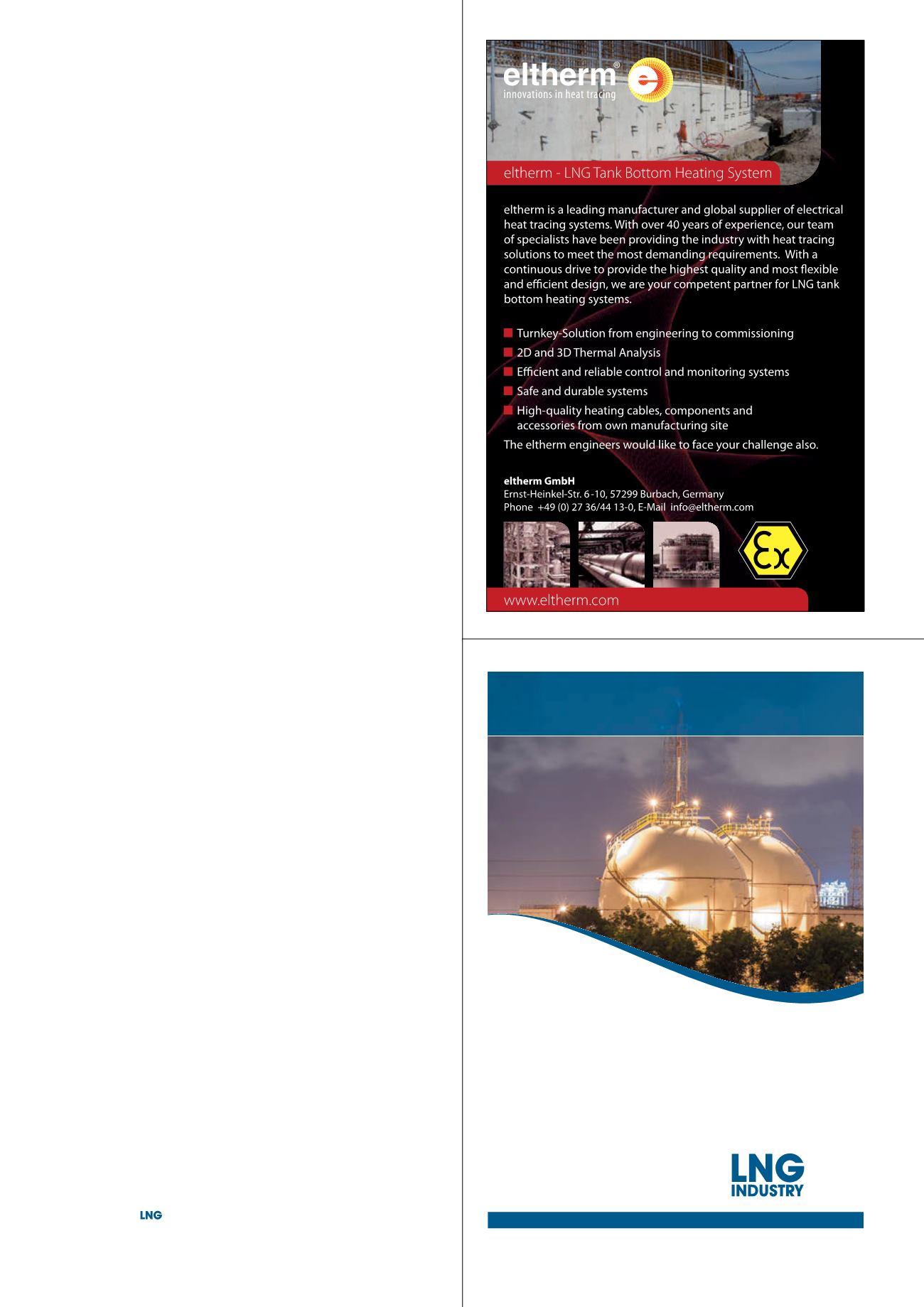
higher pressure. Therefore, in order to consume
the BOG, the pressure must be increased to that
required by the engines.
When choosing the compressor type, pressure
ratio and gas flow are the most important aspects
that need to be evaluated. For safety reasons when
using LNG as feed gas, contamination from
lubricants and the risk of gas leaks need to be
considered. Either a piston or a rotary screw
compressor should be used for gas flows below
1000 m
3
/hr. Piston compressors have a
compression ratio suitable for high pressure
engines. Screw compressors, with their lower
compression ratio, are suitable for low pressure
engines.
In oil-free piston compressors, non-contact
seals are usually used between the piston and
cylinder. To minimise leakage, the contact
surfaces are lined with sharp edges, called
labyrinth seals. Rotary screw compressors can
also be designed to operate without lubricants.
These compressors are driven by synchronised
gears, making small clearances possible without
rotor contact.
The low BOR on gas-fuelled ships, compared to
gas carriers, will only allow the compressor to run
for short periods of time before running out of gas.
In other words, a compressor will not increase BOG
handling capacity, only pressure.
Fuel sharing
In order to match BOG generation with engine
consumption for a desired load, fuel sharing can be
utilised. Dual-fuel engines are capable of running
on both diesel and gas, which can be used to
even out variations in gas supply or quality. With
normal gas operation, approximately 1 – 5% of
the pilot fuel is needed to ignite the gas. With fuel
sharing, the amount of gas can be varied between
approximately 15% and 85%, with the rest being
diesel.
Summary
Essentially, there are three suitable BOG handling
methods that should be considered; namely
boilers, auxiliary engines or reliquefaction
units. Auxiliary engines are more suited to gas
consumption than main engines. Additionally, the
power generated is usually needed, even in port.
Reliquefaction units using an expander cycle have
rather low efficiency, which means they should be
avoided for large BOR. For such cases, thermal
oxidation in either a boiler or an auxiliary engine is
a better solution.
By comparing the different BOG handling
methods, it is clear that there is no universal
solution that works for all systems. On the contrary,
the solution is rather sensitive to tank size and
consumer types. This means that the BOG handling
solution has to be evaluated on a case-by-case
basis.
Worldwide Coverage
For the latest LNG
industry news visit:
A global industry
requires a global
publication
LNG_Worldwide_Coverage.indd 1
03/02/2015 09:33


